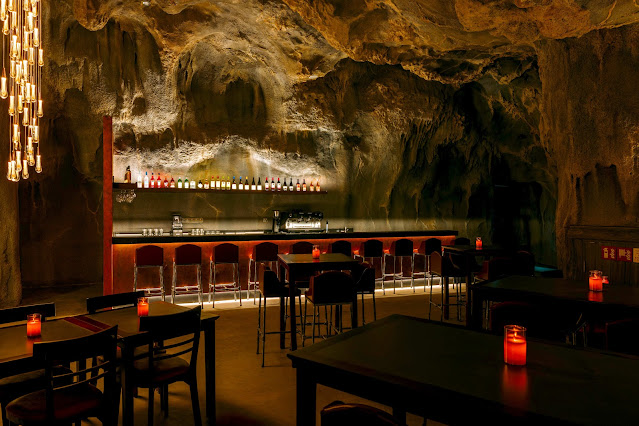Singapore has no natural caves but a man made cave restaurant is opening in 2025. When I first saw the news I thought about the fiasco with the Lepak Cave restaurant at Batu Caves, Selangor, Malaysia. See my website for articles on Lepak Cave.
However the Singapore cave restaurant is entirely manmade, so no damage will be done to a natural cave!
Rainforest Wild Asia will be Singapore’s fifth zoological park, set to launch on March 12, 2025. It is located at Mandai Wildlife Reserve. See Time Out 7 Nov 2024.
It has 8 distinct zones including a subterranean labyrinth of walk-through cave chambers. The park includes iconic animal species from the region as well as trees and shrubs. One zone is The Karsts, jagged limestone formations that rise above the canopy, providing a stunning backdrop as primates swing through the environment. You can trek along the Karst Loop and go up the elevated Karst Lookout platform. An Adventure activity is to scale the karst along a guided via ferrata path.
 |
| Photograph: Time Out Singapore |
The final zone is The Cavern. The Cavern, a 220-metre air-conditioned cave route inspired by the Mulu Caves in Sarawak, Malaysia, a UNESCO World Heritage Site that’s one of Southeast Asia’s largest and most intricate cave systems. It was made possible through a collaboration with Sarawak Forestry Department. As you venture through the darkness, keep an eye out for some fascinating creatures including Madagascar hissing cockroaches, Soro brook carp, blind cave fish, cave racers, and Asian black scorpions.
 |
| Photograph: Mandai Wildlife Group |
There are Cavern Ranger Talks. Also the Adventure activity: Wild Cavern Adventure explores the nooks and crannies of the cave where you’ll squeeze through tight spaces and navigate narrow tunnels. The Adventure Plus experiences - Critter Crawl - a 20-minute adventure. Armed with just a dim headlamp, a small group will navigate a 60-metre cave tunnel, discovering impressive stalactites, stalagmites, rock formations, and fossil imprints along the way. Booking is required.
 |
photo Photograph: Mandai Wildlife Group
|
 |
| Photograph: Mandai Wildlife Group. Time Out 12 Feb |
The restaurant
Singapore's first and only cave-dining experience, The Cavern, is operated by Tung Lok Group. The restaurant offers hearty grilled meats, vibrant shared platters, and a tempting mix of signature cocktails and craft beverages. And fret not, The Cavern is open to the public and accessible without entering Rainforest Wild Asia. This this unique new restaurant in Singapore is modelled after Sarawak’s Mulu Caves.
See Time Out, 12 Feb 2025.
 |
| Photograph: Cavern Restaurant |
 |
| Photograph: Cavern Restaurant |
 |
| Photograph: Cavern Restaurant |













